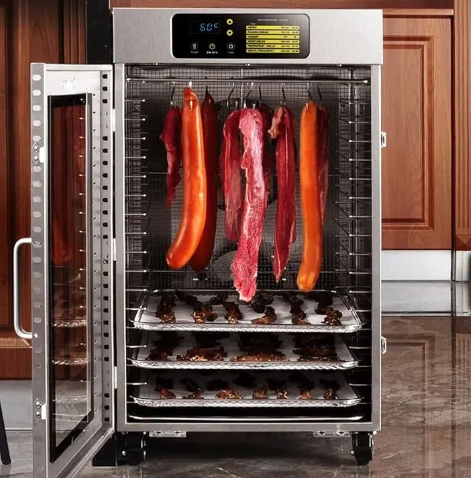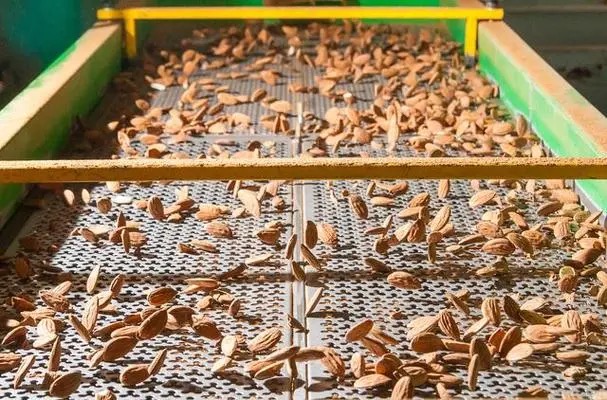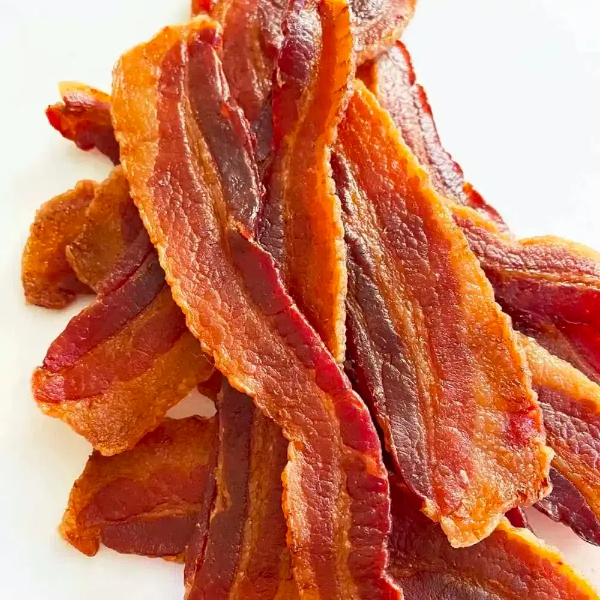In the realm of food processing, the drying process plays a critical role in preserving food quality, extending shelf life, and ensuring safety. Among various drying technologies, hang type dryers have emerged as a game changer. This article explores the advantages of hang type dryers, their operational mechanisms, and why manufacturers should consider integrating them into their production lines.

The Importance of Drying in Food Processing
Drying is a crucial step in food processing that involves removing moisture from food products. This process inhibits the growth of microorganisms and enzymatic activity, which can spoil food. Effective drying methods enhance the shelf life and safety of food items while maintaining their nutritional value.
Key Benefits of Drying
1. Prevention of Spoilage: By reducing moisture content, drying prevents the growth of yeast, bacteria, and fungi.
2. Extended Shelf Life: Properly dried foods can be stored for longer periods without refrigeration.
3. Preservation of Nutritional Value: Controlled drying processes help retain essential nutrients.
What is a Hang Type Dryer?
A hang type dryer is specialized equipment designed to dry food products by suspending them from hangers within a controlled environment. This method is particularly effective for items such as noodles, sausages, fish, and herbs, where even drying is crucial to prevent spoilage and maintain texture.
How Hang Type Dryers Work
Hang type dryers utilize a suspended arrangement that maximizes surface area exposure to airflow. This design allows for:
1. Even Airflow: Air circulates freely around the food items, ensuring uniform drying.
2. Controlled Environment: Temperature, humidity, and airflow are precisely managed to optimize the drying process.
3. Reduced Contact Points: Minimizing contact with surfaces reduces the risk of sticking or deformation.
Advantages of Hang Type Dryers
1. Enhanced Air Circulation
The design of hang type dryers promotes superior air circulation around food items. This leads to:
- Faster Drying Times: Improved air circulation accelerates the drying process.
- Uniform Moisture Removal: Consistent airflow prevents localized over-drying or under-drying.
2. Preservation of Food Quality
Hang type dryers help maintain the quality of food products through:
- Retention of Volatile Compounds: Gentle drying minimizes the loss of essential oils and aromatic compounds.
- Color and Texture Maintenance: Even drying preserves the natural color and texture of food products.
- Prevention of Case Hardening: Uniform moisture removal reduces the risk of hardening on the outer layer.
3. Energy Efficiency
Modern hang type dryers often incorporate heat pump technology, which can save up to 75% energy compared to traditional methods. This results in lower operational costs and reduced environmental impact.
4. Versatility in Food Processing
Hang type dryers are suitable for a wide range of food products:
- Noodles: Prevent clumping while ensuring uniform drying.
- Meats: Provide controlled environments for curing and drying.
- Fish and Seafood: Retain natural flavors and aromas.
- Herbs and Spices: Preserve essential oils during low-temperature drying.
- Fruits and Vegetables: Produce high-quality dried fruits with minimal nutrient loss.
5. Space Efficiency
Hang type dryers are designed to optimize vertical space in production facilities. By utilizing vertical space effectively, manufacturers can maximize their production capacity without requiring extensive floor space. This is particularly beneficial for smaller facilities or those looking to expand without significant renovations.
6. Reduced Labor Costs
Automation features in modern hang type dryers can significantly reduce labor costs associated with manual handling. Automated loading and unloading systems streamline operations, allowing workers to focus on other critical tasks within the production line.

Case Studies Demonstrating Success
Several manufacturers have successfully transitioned to hang type dryers with remarkable results:
- ABC Noodles: A large noodle manufacturer replaced traditional tray dryers with hang type machines, resulting in a 20% reduction in waste and a 15% increase in production efficiency due to improved product quality.
- XYZ Meats: A sausage producer implemented hang type dryers for curing processes, achieving a 30% reduction in curing time while maintaining desired flavor profiles.
- Fresh Herbs Co.: A company specializing in dried herbs switched to hang type dryers and noted a significant improvement in color retention and aroma preservation, leading to increased customer satisfaction and repeat orders.
The Technology Behind Hang Type Dryers
Advanced Control Systems
Modern hang type dryers are equipped with advanced control systems that allow operators to monitor and adjust parameters such as temperature, humidity, and airflow in real-time. This level of control ensures optimal conditions throughout the drying process.
Integration with IoT
The Internet of Things (IoT) technology has found its way into hang type dryers, enabling remote monitoring and control via smartphones or computers. Manufacturers can receive alerts about system performance or potential issues, allowing for proactive maintenance that minimizes downtime.
Eco-Friendly Features
Many new models incorporate eco-friendly features such as energy recovery systems that recycle heat within the dryer. This not only enhances energy efficiency but also reduces overall carbon footprints—aligning with global sustainability goals.
Best Practices for Implementing Hang Type Dryers
To maximize the benefits of hang type dryers, manufacturers should consider these best practices:
1. Conduct Thorough Research: Understand your specific drying needs based on product types before selecting a dryer model.
2. Invest in Training: Ensure that staff are well-trained on operating the equipment efficiently to optimize production processes.
3. Regular Maintenance Checks: Implement a routine maintenance schedule to keep equipment running smoothly and extend its lifespan.
4. Monitor Performance Metrics: Track key performance indicators (KPIs) such as energy consumption, drying time, and product quality to identify areas for improvement.
5. Adapt to Seasonal Variations: Adjust drying parameters based on seasonal changes in humidity and temperature for optimal results year-round.
Conclusion
Hang type dryers represent a significant advancement in food processing technology. Their ability to provide efficient, uniform drying while preserving food quality makes them an invaluable tool for manufacturers worldwide. With energy-efficient designs and customizable features, these machines are poised to play a crucial role in the future of food processing.
By investing in hang type dryers, manufacturers can improve product quality, reduce costs, and enhance sustainability efforts. As the demand for high-quality dried food products continues to grow globally, integrating this technology will be essential for staying competitive in the market.

FAQ
1. What types of foods can be dried using hang type dryers?
Hang type dryers are versatile and suitable for various foods including noodles, meats, fish, herbs, spices, fruits, and vegetables.
2. How do hang type dryers improve energy efficiency?
These dryers often use heat pump technology that recycles heat within the system, leading to energy savings of up to 75% compared to traditional methods.
3. Can hang type dryers help with food safety?
Yes, by providing controlled environments that prevent bacterial growth during the drying process.
4. What are the advantages over traditional tray dryers?
Hang type dryers offer better airflow management which leads to more uniform drying and less risk of product sticking or deformation compared to tray dryers.
5. How does automation play a role in hang type dryers?
Modern hang type dryers can include automation features such as automatic loading/unloading systems and remote monitoring capabilities that enhance operational efficiency.
Citations:
[1] https://www.dryeratech.com/hang-type-drying-machines-a-game-changer-for-food-processing.html
[2] https://www.dryeratech.com/hang-type-dryers-the-secret-to-perfectly-dried-products.html
[3] https://patents.google.com/patent/CN110207480A/zh
[4] https://www.dryeratech.com/understanding-the-benefits-of-hang-type-drying-technology.html
[5] https://www.foodinfotech.com/dryers-in-food-processing-enhancing-shelf-life-and-safety/
[6] https://patents.google.com/patent/WO2017197612A1/zh
[7] https://gcwgandhinagar.com/econtent/document/1588156026Unit%20V%20Types%20of%20dryers%20and%20their%20applications.pdf
[8] https://extension.umn.edu/preserving-and-preparing/drying-food











